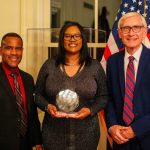Distracted Driving Kills
Distracted driving is claiming the lives of more pedestrians and cyclists.

Pedestrian fatalities attributed to distracted driving increased significantly between 2005 and 2010. Image: Public Health Reports
| Wisconsin Fatalities by Role | ||
| (Year-to-date) | ||
| 2013* | 2012 | |
| Bicyclists | 9 | 10 |
| Drivers | 240 | 252 |
| Motorcycle-drivers | 76 | 99 |
| Motorcycle-passengers | 4 | 14 |
| Passengers | 66 | 101 |
| Pedestrians | 29 | 35 |
| Unknown | 7 | 0 |
| Total | 431 | 511 |
| Source: WisDOT | ||
Total traffic deaths have declined nationwide in recent years, but the same has not held true for the most vulnerable people on the streets: cyclists and pedestrians. In 2011, 130 more pedestrians were killed in traffic than the year before, a three percent increase, while 54 more people lost their lives while biking, an increase of eight percent. The same year, overall traffic deaths declined two percent.
As for the reasons why, good data has been scarce, but that hasn’t stopped major media from blaming victims for “drunk walking” or “distracted walking.” Now a new study published in Public Health Reports, the journal of the U.S. Public Health Service and the Office of the U.S. Surgeon General, reveals that distracted driving — particularly driving while texting — partially explains the rising death toll.
A research team from the University of Nebraska Medical Center examined crash records from every fatal collision tracked by the Fatality Analysis Reporting System between 2005 and 2010. They found that the rate of bike and pedestrian fatalities in which distracted driving was listed as a factor increased sharply over that time period.
Distracted driving was defined to include anything from tending to a child to tuning the radio or eating while driving. Cell phone use was a major culprit, cited by police in 18.6 percent of the distracted driving deaths involving pedestrians and cyclists.
“The problem is that pedestrians and cyclists have little protection on the roadways,” Fernando Wilson, an associate professor in the College of Public Health at the University of Nebraska Medical Center and one of the study’s authors, told the Robert Wood Johnson Foundation, sponsor of the study. “Evidence suggests that separating non-motorized travel from motorized travel, through bike lanes or other redevelopment efforts, could greatly reduce deaths.”
This story originally ran on Streetsblog. Angie Schmitt is a newspaper reporter-turned planner/advocate who manages the Streetsblog Network from glamorous Cleveland, Ohio. She also writes about urban issues particular to the industrial Midwest at Rustwire.com.
Streetsblog
-
Car Culture Cements Suburban Politics
![Sprawl. Photo by David Shankbone (David Shankbone) [GFDL (http://www.gnu.org/copyleft/fdl.html) or CC-BY-SA-3.0 (http://creativecommons.org/licenses/by-sa/3.0/)], via Wikimedia Commons [ https://commons.wikimedia.org/wiki/File%3ASuburbia_by_David_Shankbone.jpg ]](https://urbanmilwaukee.com/wp-content/uploads/2017/10/1024px-Suburbia_by_David_Shankbone-185x122.jpg) Nov 23rd, 2018 by Angie Schmitt
Nov 23rd, 2018 by Angie Schmitt
-
Most Drivers Don’t Yield to Pedestrians
 Mar 22nd, 2018 by Angie Schmitt
Mar 22nd, 2018 by Angie Schmitt
-
Jobs Up Yet Driving Down in Seattle
 Feb 22nd, 2018 by Angie Schmitt
Feb 22nd, 2018 by Angie Schmitt





















